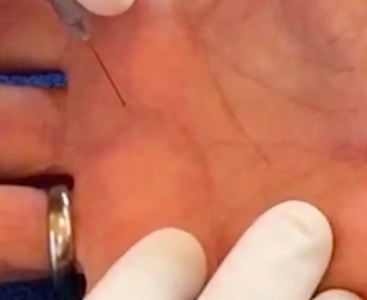Read about A1 pulley Anatomy, Trigger Finger, A1 pulley release CPT | A1 pulley finger injection CPT.
What is A1 Pulley?
The A1 pulley is an important component that is positioned in the palm and plays an important part in the functioning of the fingers. It is a powerful, fibrous band that guides and stabilizes the flexor tendons during finger movement. Understanding the anatomy, potential injuries, and treatment options associated with the A1 pulley is essential for those experiencing hand discomfort or seeking to prevent such injuries.
A1 pulley Anatomy
The flexor tendons are a set of long, cordlike structures that run from the forearm muscles to the bones of the fingers and thumb. The bones of the fingers and thumb bend when the corresponding muscles contract because of the pulling action of the flexor tendons on the bones.
When traveling from the palm to the finger or thumb, the flexor tendon travels via its tendon sheath. Tendon sheaths are fixed to the bones of the finger or thumb.
When the fingers flex and extend, bands of tissue known as pulleys along the tendon sheath keep the flexor tendons firmly attached to the finger bones. The A1 pulley is located near the base of each digit, where it meets the palm. This particular pulley is the one that causes the trigger finger. The A1 pulley can, if required, be sacrificed to treat a trigger finger if the other pulleys are in good working order.

A1 pulley Trigger Finger
When a person possesses a trigger finger, the flexor tendon has trouble gliding through the A1 pulley because it becomes inflamed and thickened. The flexor tendon may, over time, become inflamed and produce a tiny nodule on its surface, further worsening the problem. A catching or popping sound is felt as the finger flexes and the thicker nodule slides through the tight pulley. This is typically painful.
A1 pulley release CPT
A1 pulley release surgery is performed to treat the trigger finger, which causes difficulty extending or flexing the finger. This procedure is denoted by CPT code 26055.
A1 pulley finger injection CPT
Following are some applicable CPT codes for A1 pulley finger injection:
CPT code 20550: This code is utilized for injections into a single ligament or tendon sheath aponeurosis (such as the plantar "fascia").
CPT code 20551: This code is used for injecting a single tendon at its origin/insertion site.
The particular CPT code that is applied can be different every time, depending on the procedure that is being carried out. To ensure appropriate billing and reimbursement, it's critical to use the right CPT code.









0 Comments